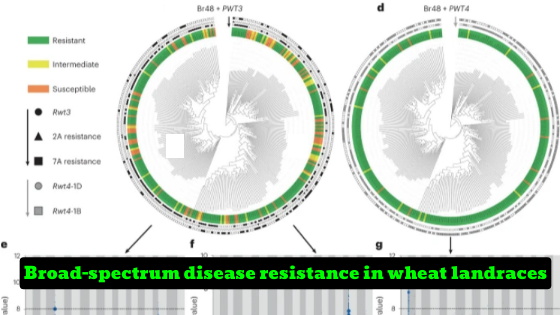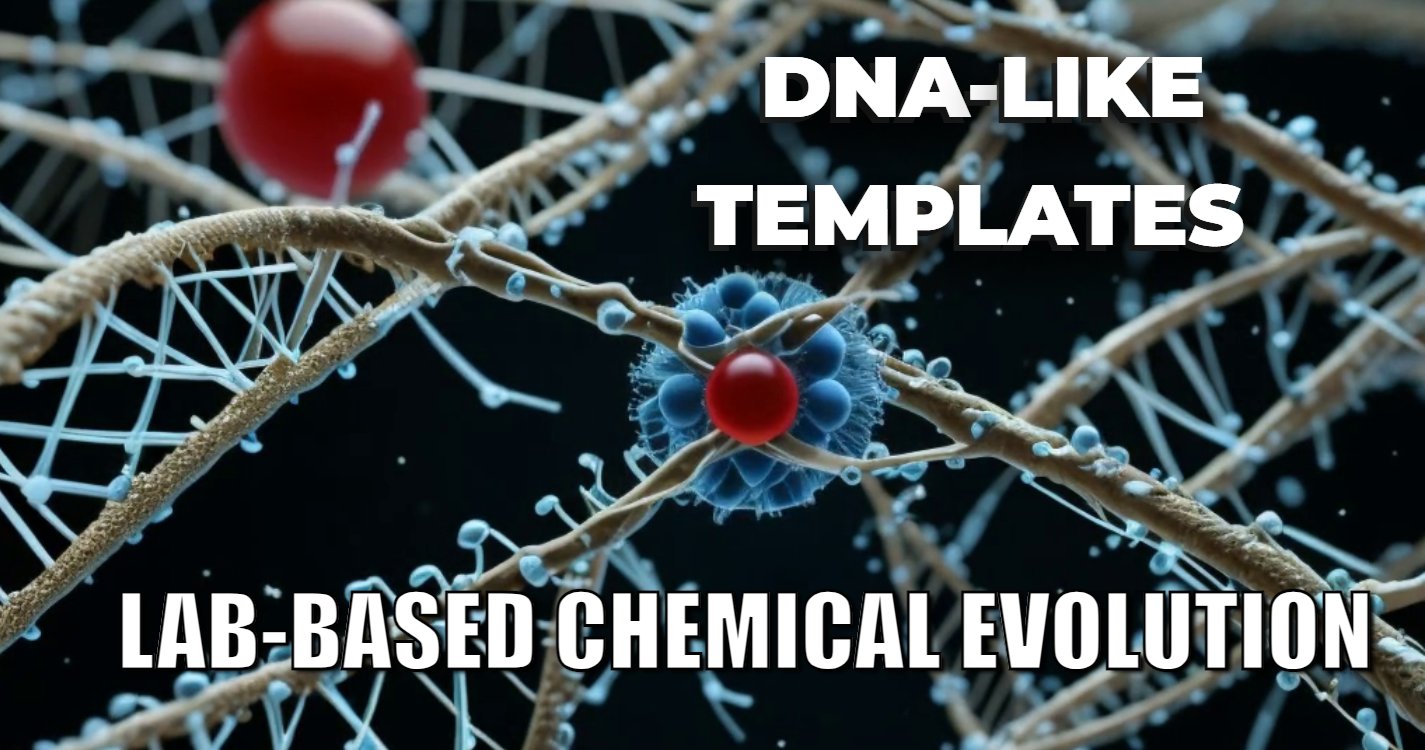A recent study published in Nature Plants highlights the discovery of a wheat kinase and immune receptor that forms host-specificity barriers against the blast fungus. The study sheds light on the allelic variation of the candidate genes and their resistance to the Triticum pathotype of P. oryzae, which is a critical threat to wheat crops.
Key Outcomes:
- Identification of four groups of allelic variants of Rwt3 NLR candidate and five groups of allelic variants of Rwt4 NLR candidate.
- Cloning of a 400 bp fragment of Rwt3 and Rwt4 into the BSMV vector pCa-cbLIC via ligation independent cloning.
- Designing of KASP markers using tauschii and wheat and analyzing their distribution in the Watkins panel.
- Screening of seedlings with Br48, a triticum pathogen, and transforming with either the Rwt3 or the RWT4 effector (ref. Br48).
- Identification of resistance on chromosome 2A when mapped to the assembly of wheat cultivar SY Mattis (e) and a resistant on a region of chromatin 1B containing the homoeologue of RwT4.
- Development of KASP marker design to detect the resistance genes in wheat strains and Watkins collection with a validation rate of 97% and 99%.
Details:
The study aimed to clone resistance genes that confer resistance to the PWT3 effector in wheat. Using a Triticeae bait library, the researchers captured and sequenced the nucleotide-binding site leucine-rich repeat protein (NLR) complements of 320 wheat lines, including 300 wheat landraces from the A.E. tauschii and Watkins panels. They screened seedlings of the panel with Br48, a triticum pathogen, and transformed with either the Rwt3 or the RWT4 effector (ref. Br48).
The researchers identified a resistance on chromosome 2A when mapped to the assembly of wheat cultivar SY Mattis (e) and a resistant on a region of chromatin 1B containing the homoeologue of RwT4. They developed Kompetitive Allele-Specific PCR (KASP) marker design to detect the resistance genes in wheat strains and Watkins collection, obtaining a validation rate of 97% and 99% based on their corresponding in silico predictions.
The study provides important insights into the allelic variation of the candidate genes and their resistance to the Triticum pathotype of P. oryzae. The discovery of the linked WTK allele, which is required for resistance to two unrelated fungal pathogens, suggests that it may be a broad-spectrum component of disease resistance. The findings could pave the way for new strategies to enhance the resistance of wheat crops to fungal pathogens and improve food security.
Nature Plants nature plants Brief Communication A wheat kinase and immune receptor form host-specificity barriers against the blast fungus
Arora; Steed; Goddard; Gaurav; O'hara; Schoen; Rawat; Elkot; Korolev; Chinoy; Nicholson; Asuke; Antoniou-Kourounioti; Steuernagel; Yu; Awal; Forner-MartÃnez; Wingen; Baggs; Clarke; Saunders; Krasileva; Tosa; Jones; Tiwari; Wulff; Nicholson
Full-text link: https://doi.org/10.1038/s41477-023-01357-5
What this paper is about
- To investigate the allelic variation of these candidate genes, we used BLASTn to query their sequences in the NLR assemblies of Aegilops tauschii the D-genome progenitor of bread wheat and Watkins wheat landraces.
- For Rwt3 NLR candidate, we identified four groups of allelic variants as well as presence/absence variation in Ae.
- For Rwt4 NLR candidate, we identified five groups of allelic variants in Ae.
What you can learn
- A 400 bp fragment of Rwt3 and Rwt4 was cloned into the BSMV vector pCa-cbLIC via ligation independent cloning as described previously.
- tauschii and wheat were used to design KASP markers, following which KASP marker analysis was performed on the entire Watkins panel to understand the distribution of these genes in the landrace collection.
- All lines were phenotyped in leaf assays using isolates Br48 and Br48 + PWT3.
Core Q&A related to this research
What is the topic of the research described in the paper?
A: The paper describes research on identifying and cloning resistance genes in wheat that can confer resistance to the PWT3 effector of the Triticum pathotype of P. oryzae.
What is the significance of the Rwt3 and Rwt4 NLR candidates identified in the research?
A: The Rwt3 and Rwt4 NLR candidates were identified as potential resistance genes in wheat against the PWT3 effector of the Triticum pathotype of P. oryzae. KASP marker analysis was performed on the entire Watkins panel to understand the distribution of these genes in the landrace collection.
What is the outcome of the screening process of the panel using the Rwt3 and Rwt4 effectors?
A: The screening process using the Rwt3 and Rwt4 effectors identified a resistance on chromosome 2A and a resistance on a region of chromatin 1B containing the homoeologue of RwT4.
What is the technique used to detect the resistance genes in wheat strains and Watkins collection?
A: The technique used to detect the resistance genes is Kompetitive Allele-Specific PCR (KASP) marker design.
What is the finding of the research on the linked WTK allele?
A: The finding is that the linked WTK allele, and not the identified NLR candidate, is required for resistance to two unrelated fungal pathogens, suggesting that it may be a broad-spectrum component of disease resistance.
Basics Q&A related to this research
What is a kinase?
A kinase is an enzyme that catalyzes the transfer of a phosphate group from ATP to a specific molecule, such as a protein.
What is an immune receptor?
An immune receptor is a type of receptor protein on the surface of cells that recognizes and responds to pathogen-associated molecular patterns (PAMPs) or damage-associated molecular patterns (DAMPs), triggering an immune response.
What is blast fungus?
Blast fungus is a type of fungal pathogen that can cause severe damage to crops such as wheat and rice.
What is allelic variation?
Allelic variation refers to the presence of different forms of a gene or DNA sequence at a particular locus on a chromosome.
What is an NLR candidate?
An NLR candidate is a nucleotide-binding site leucine-rich repeat protein that is a potential candidate for conferring resistance to a particular pathogen.
What are KASP markers?
KASP markers are Kompetitive Allele-Specific PCR markers, a type of genetic marker that is used to detect specific DNA sequence variations and is often used for genotyping.
What are resistance genes?
Resistance genes are genes that encode proteins that can recognize and respond to specific pathogen-associated molecules, allowing the plant to mount an immune response and resist infection.
What is a Triticeae bait library?
A Triticeae bait library is a collection of genetic sequences from wheat and related species that can be used as a tool to capture and sequence genes that are important for plant-pathogen interactions.
What is a nucleotide-binding site leucine-rich repeat protein?
A nucleotide-binding site leucine-rich repeat protein is a type of receptor protein that is often involved in plant immune responses and can recognize and respond to specific pathogen-associated molecules.
What is a PWT3 effector?
PWT3 effector is a protein produced by the blast fungus that can cause disease in wheat.
What is chromosome 2A?
Chromosome 2A is one of the 42 chromosomes in the wheat genome and is important for plant-pathogen interactions.
What is chromosome 1B?
Chromosome 1B is another chromosome in the wheat genome that is important for plant-pathogen interactions.
What is Kompetitive Allele-Specific PCR (KASP)?
Kompetitive Allele-Specific PCR (KASP) is a type of genotyping assay that uses a competitive PCR reaction to detect specific DNA sequence variations.
What is validation rate?
Validation rate refers to the proportion of predicted genotypes that are confirmed by experimental validation.
What is disease resistance?
Disease resistance refers to the ability of a plant to resist infection or disease caused by a pathogen.




